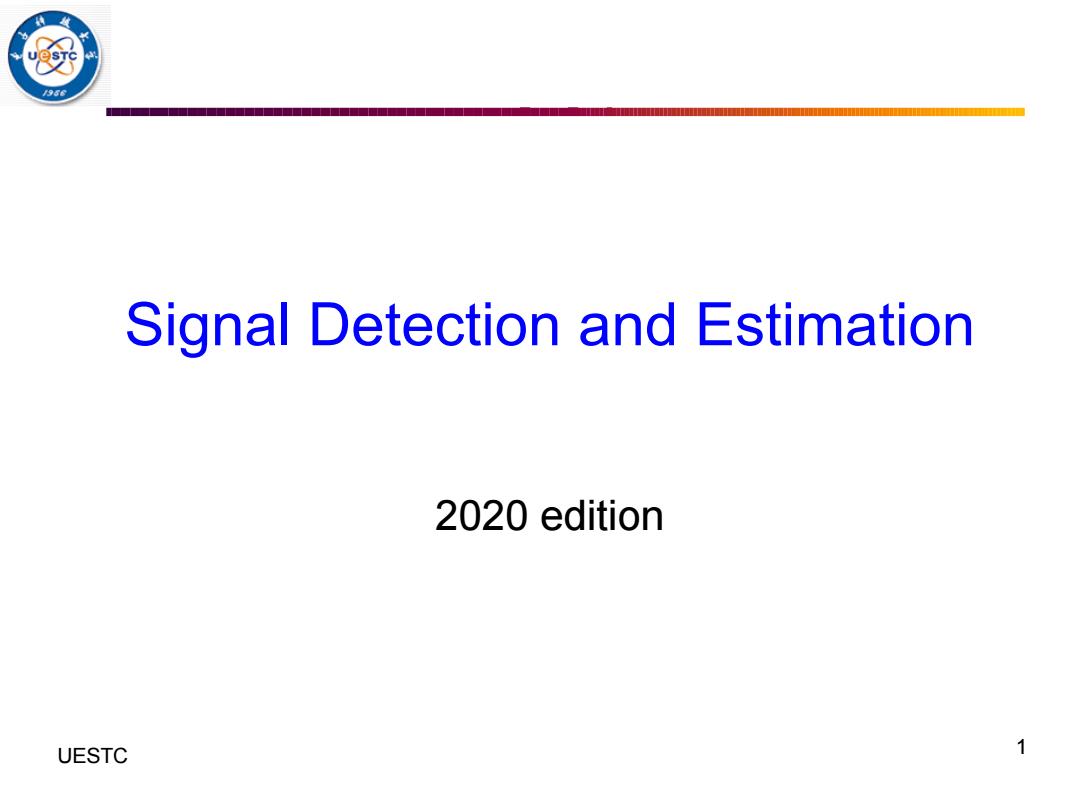
呀 Signal Detection and Estimation 2020 edition UESTC 1
UESTC 何子述等 Signal Detection and Estimation 2020 edition 1
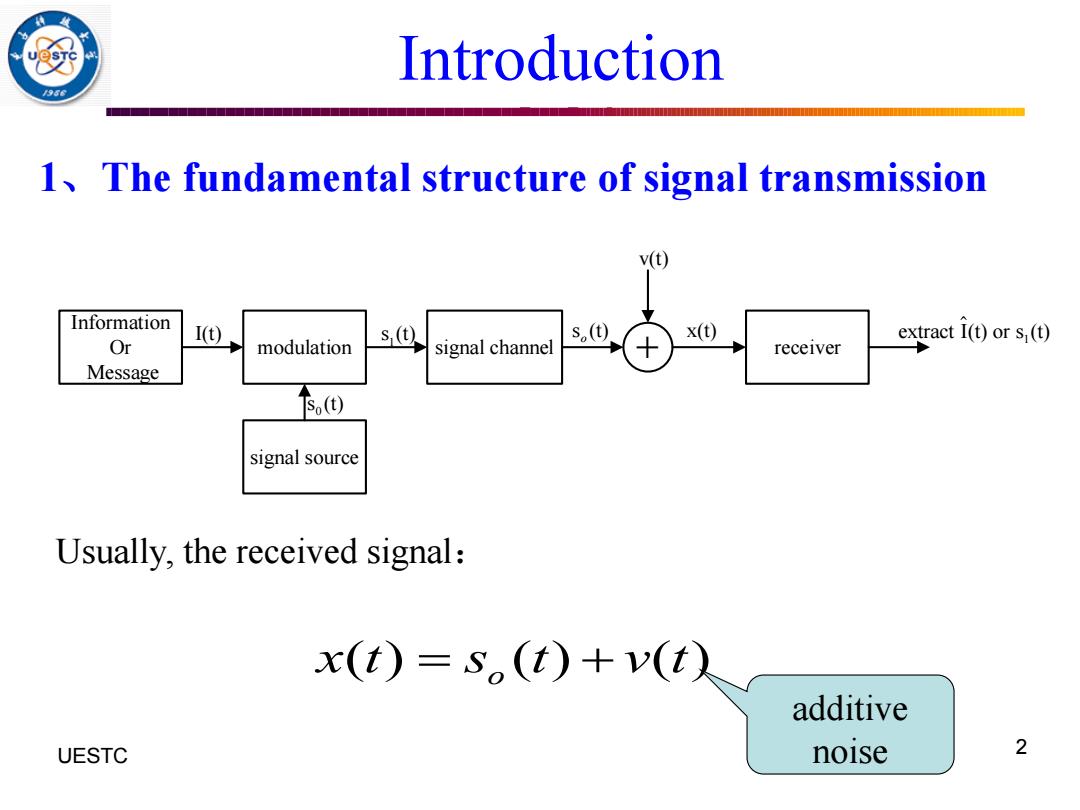
Introduction 1 The fundamental structure of signal transmission v(t Information I(t) s(@ s() x() extract I(t)or s(t) Or modulation signal channel receiver Message 下s(①) signal source Usually,the received signal: x(t)=so(t)+v(t入 additive UESTC noise 2
UESTC 何子述等 2 1、The fundamental structure of signal transmission Usually, the received signal: ( ) ( ) ( ) o x t s t v t = + additive noise 0 s (t) signal channel receiver Information Or Message modulation signal source 1 I(t) s (t) s (t) o v(t) x(t) 1 extract I(t) or s (t) + Introduction
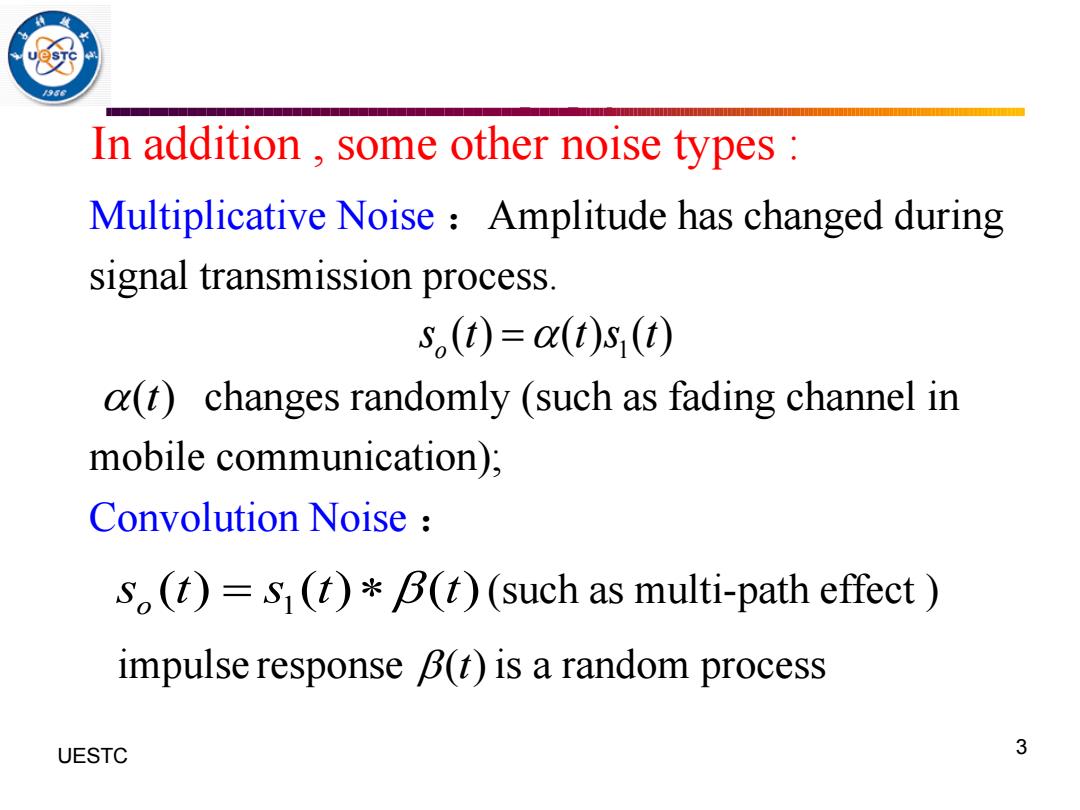
In addition.some other noise types Multiplicative Noise Amplitude has changed during signal transmission process. S,(t)=a(t)s,(t) a(t)changes randomly (such as fading channel in mobile communication); Convolution Noise s.()=s(t)*B()(such as multi-path effect impulse response B(t)is a random process UESTC 3
UESTC 何子述等 3 Multiplicative Noise :Amplitude has changed during signal transmission process. changes randomly (such as fading channel in mobile communication); Convolution Noise : 1 ( ) ( ) ( ) o s t t s t = 1 ( ) ( ) ( ) o s t s t t = (such as multi-path effect ) impulse response ( )t is a random process ( )t In addition , some other noise types :
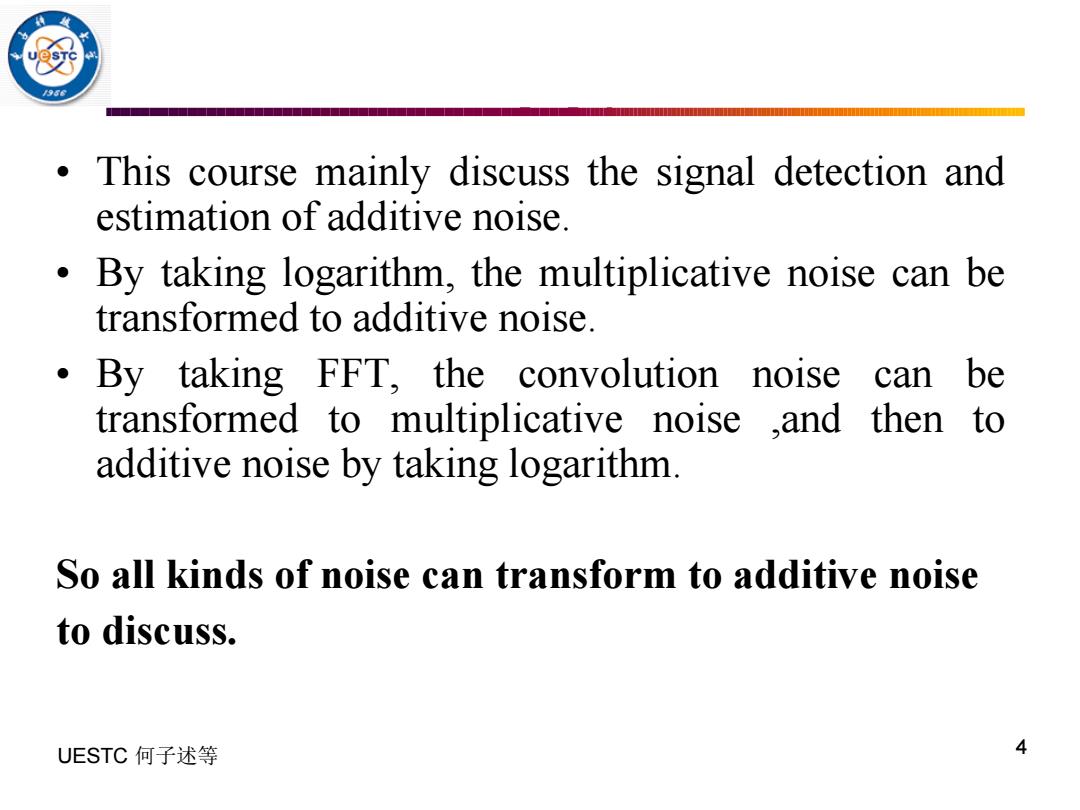
0 This course mainly discuss the signal detection and estimation of additive noise. By taking logarithm,the multiplicative noise can be transformed to additive noise. By taking FFT,the convolution noise can be transformed to multiplicative noise ,and t then to additive noise by taking logarithm. So all kinds of noise can transform to additive noise to discuss. UESTC何子述等 4
UESTC 何子述等 4 • This course mainly discuss the signal detection and estimation of additive noise. • By taking logarithm, the multiplicative noise can be transformed to additive noise. • By taking FFT, the convolution noise can be transformed to multiplicative noise ,and then to additive noise by taking logarithm. So all kinds of noise can transform to additive noise to discuss
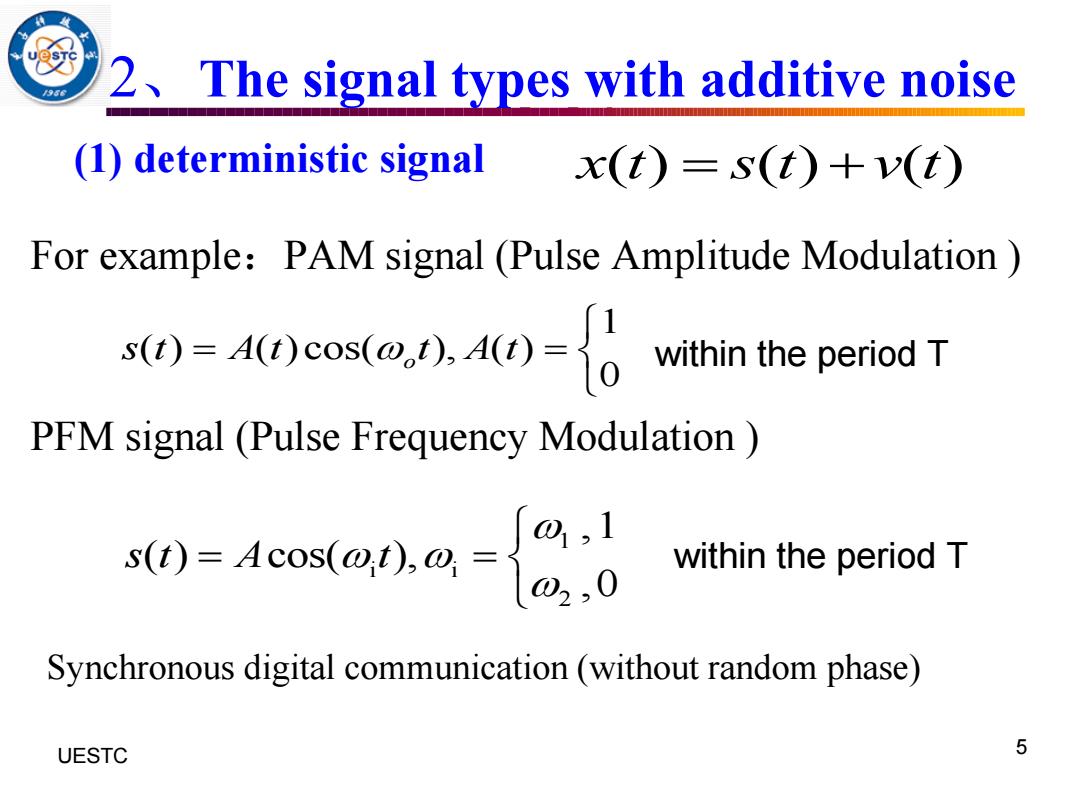
2 The signal types with additive noise (1)deterministic signal x(t)=s(t)+v() For example:PAM signal (Pulse Amplitude Modulation st0=A0cosa40=0 within the period T PFM signal (Pulse Frequency Modulation s(t)=Acos()0 J0,1 within the period T Synchronous digital communication (without random phase) UESTC 5
UESTC 何子述等 5 2、The signal types with additive noise For example:PAM signal (Pulse Amplitude Modulation ) PFM signal (Pulse Frequency Modulation ) x t s t v t ( ) ( ) ( ) = + 1 ( ) ( )cos( ), ( ) 0 o s t A t t A t = = within the period T 1 i i 2 , 1 ( ) cos( ), , 0 s t A t = = within the period T Synchronous digital communication (without random phase) (1) deterministic signal